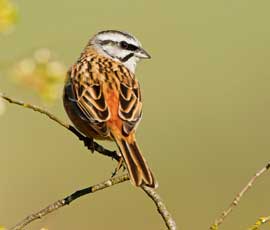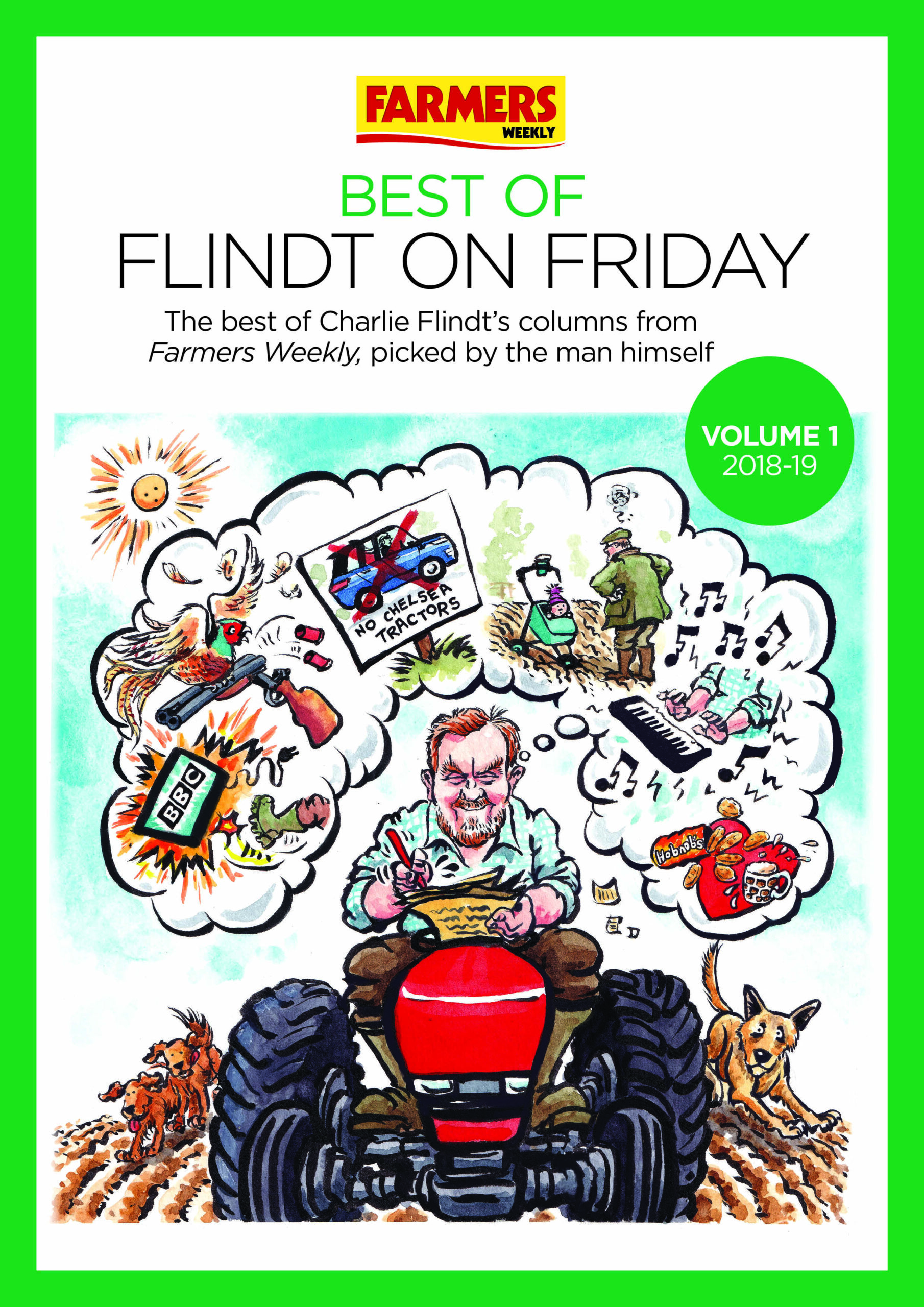Are we kidding ourselves on… Biodiversity?

From farm subsidies to pesticides, genetic modification to cloning, farming has more than its fair share of flak on a host of issues. But is modern agriculture the root of all evil? Or is it just an easy target? In this first of an occasional series, Johann Tasker examines whether we’re kidding ourselves when it comes to biodiversity.
Conservationists say farmers must do more to look after the countryside. But farmers say they already are. So who is right?
An early decision to extend industry efforts encouraging farmers to adopt environmental measures on their land is fuelling calls for producers to do more to look after the countryside and its wildlife.
Most farmers believe they already take their environmental responsibilities seriously. And many also reject accusations that modern agricultural methods are to blame for a decline in biodiversity.
Designed to fend off the threat of a return to compulsory set-aside by pulling together the work farmers already do for wildlife, the industry-led Campaign for the Farmed Environment was due to be assessed this summer.
The initiative aims to show that farmers are willing and able to retain and exceed the environmental benefits once provided by set-aside. And that they can do so voluntarily, without the need and expense of regulation.
Early confirmation that the campaign will continue came last month after it emerged more work was needed to meet its June deadline – despite an increase in the uptake of key options under Entry Level Stewardship.
New figures from Natural England revealed a 37% increase in key ELS options – including skylark plots, wild birdseed mixes and over-wintered stubbles – since the campaign began three years ago.
Some 800ha of farmland were added in February and 700ha followed in March. But uptake would have to increase much faster for the campaign to hit its target of doubling the area under key options from 54,393ha to 79,342ha by June.
Part of the problem is that industry leaders have had to tread a fine line – encouraging farmers to join the campaign without sounding as if they are hectoring farmers for not doing enough for the environment.
So are farmers doing enough to encourage biodiversity? Or should they do more? “We are short of the target by 14,700ha, but that doesn’t mean what farmers have achieved is insufficient,” says campaign co-ordinator Victoria Hicks.
Reading between the lines, the government appears to agree. After assuming office almost two years ago, farm minister Jim Paice told Farmers Weekly he had concerns over the criteria being used to measure the campaign’s success.
“I have always used the rather simplistic statement that you don’t measure wildlife in acres,” he said. Instead, it would be better to measure increases in populations of farmland birds and beneficial insects.
That might be so. But the farmland bird index – considered by many conservationists to be a good indicator of the broad state of wildlife in the countryside – doesn’t make good reading either.
Farmland bird populations fell to their lowest ever level in 2010, show DEFRA figures. True, most of the decline occurred during the 1980s, but there had also been a fall of 9.4% in the most recent five years.
Farmers are famously sceptical about the statistics. A recent survey found that just 10% of producers believe birds such as lapwings and skylarks have declined on their farms, whereas 52% believe they have increased.
Similar results were found for butterflies and bumblebees, according to the Voluntary Initiative. At the same time, 86% of producers see environmental management and wildlife conservation as important aspects of farming.
Just half of the farmers who thought that farmland birds had declined accepted it was because of changes in farming practice. The rest blamed declines on predation, disturbance or loss of farmland to development.
With some 44,520 farmers doing their bit for the environment by managing land under ELS, it’s little surprise that so few producers trust the index, says Stephen Fell, chairman of LEAF, the Linking Environment and Farming charity.
“They see the very real increases in biodiversity that have resulted, and despair when an announcement of a reduction in the index is accompanied by media comment blaming it as ever on intensive agriculture.”
Continuing the Campaign for the Farmed Environment should perhaps therefore be seen as proof that farmers are looking after the countryside and its wildlife, rather than an admission that they aren’t doing enough.
Introduced in 2009 when the Labour government was considering introducing a mandatory “son of set-aside”, farm leaders say the need to continue the campaign has since taken on a wider significance, too.
Today it is Brussels, rather than the Westminster government, that is actively considering implementing set-aside replacement. Which makes it more important than ever to show that farmers are doing the right thing already.
Abandoning the campaign now would be folly at a time when alternative proposals to “green” the CAP could see farmers forced to place 7% of their land into “ecological focus areas,” say supporters.
Mr Paice acknowledged as much in a letter to farm leaders last autumn. “Continued participation in the campaign by as many farmers as possible is vital at this stage in the negotiations,” he wrote.
Are farmers doing enough for wildlife?
YES
 Says Essex farmer Guy Smith, NFU’s communication spokesman on farming and PR
Says Essex farmer Guy Smith, NFU’s communication spokesman on farming and PR
Like most farmers of my generation, I’ve embraced the conservation agenda. My fields have wildlife margins, I’ve planted miles of hedges and thousands of trees, created water features, put up nest boxes – the list goes on. The way we manage our crops and stock has also improved – for instance, we’ve radically changed the way we use insecticides and phosphate fertiliser.
I’m no exception. If you look at the stats and the surveys, it’s clear this is the picture generally across British farming. Back on our farm we’ve seen good results. Birds such as buzzards, hobbys, sparrowhawks, kites, barn owls, harriers and woodpeckers that were rare in my youth, we now see regularly. Less exciting but equally more prolific have become magpies, jays and crows. I was always taught at school that if the predators at the top of the food chain were doing well then it was evidence that the rest of the chain was also in good order.
Sure enough we’ve seen increases in bite-sized birds such as chaffinches, blackbirds, swallows, tits, robins, collared doves and so on. We also know our water has become cleaner, and not surprisingly we have seen increases in water species such as swans, geese, ducks, grebes, herons, moorhens and coots – we also have more fish.
This is the picture nationally. If you look at RSPB/BTO figures for all species of British bird, you find that there are more species increasing than decreasing and the species list is becoming longer. The same is true of British mammals. So in conclusion am I advocating a retreat from the conservation agenda? Not at all. We should build on this success.
The change I’d make is how we celebrate this success story with the public. That’s the bit we are not good at. We tend to be judged by the farmland bird index. But, here’s the twist. None of the species mentioned above are on it.
NO
 Says Dr Mark Avery, former conservation director of the RSPB
Says Dr Mark Avery, former conservation director of the RSPB
When NFU president Peter Kendall went out of his way last year to say there was no biodiversity crisis, it must have slipped his mind that farmland birds reached an all-time low in 2010.
And Peter must have forgotten that species such as cornflower, harvest mouse and corn bunting – all named after the arable farming system that he practises – are all much rarer than when he and I were boys.
The NFU has hardly said a kind word about wildlife for years, nor has it demonstrated any sympathy for, or much knowledge of, the difficulties faced by wildlife in our farmed countryside.
What other industry, particularly one that gets such huge income support from taxpayers, would allow its senior spokesman to disparage the loss of wildlife and then reward him by re-election?
And it’s all so unnecessary; the Game and Wildlife Conservation Trust and the RSPB have both shown how modern farming can produce plenty of food and plenty of wildlife together – but do we see the NFU promoting this way forward? No, we hear them saying that there is no biodiversity crisis and that public subsidies to farmers should be switched from the environment to food production.
It’s far easier to live in denial of the problem than to admit it – to admit it is not to shoulder the blame but it is to share the responsibility for finding a workable solution – many would call this true stewardship of the countryside.
I would say that the NFU is living in cloud-cuckoo land – except that England’s cuckoos declined by 63% between 1995 and 2010, too, so that’s not a great place to live either.
• The statistics say one thing, but real life experience on many farms suggests the opposite. So are we kidding ourselves when it comes to biodiversity? Or is rural wildlife in a good state of health? Have your say at www.fwi.co.uk/biodiversity

